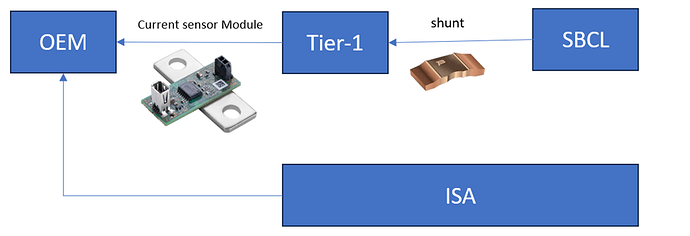Need for accuracy in Current measurement:
OEMs require higher accuracy and redundancy in current measurement comes due to safety, regulatory and performance needs. The safety requirement comes from the ISO26262 standard and current measurement is categorized as ASIL C. What it means is that the shunts must not provide inaccurate results in the operating range of -40°C - 80°C. This would mean that the shunt should not expand/contract based on temperatures, variations in current. The value of resistance should not change beyond an acceptable tolerance over a 15 -20-year lifespan.
The regulatory requirement comes from Advanced Clean Cars II - California Air Resources Board and the Euro 7 for zero Emission vehicles. The standard wants to ensure that the certified range and the end-of-life criteria are stringently met. Thus, BMS algorithms such as State of charge, State of health calculation must be met more stringently. This is creating more demand for accurate shunts.
Performance needs by the OEMs are also driving for accuracy in the current measurement which is an important input for various range algorithms of the electric vehicles.
How the dominant player’s ambition is creating some changes in the supply chain.
Originally ISA had a dominant role in providing shunts to Tier1s who would further package it into their embedded system and provide it to the customers. However since 2018-19 onwards ISA had a more ambitious goal of bypassing the tier-1 and providing the current sensor modules to the OEM’s directly
The have come out with a series of shunt modules ( IVT-S Series • Isabellenhütte ) which puts them in competition with their original customers. This is where SBCL gains prominence as Donald has explained in the post above. For OEMs the order of importance for shunts will be Accuracy – Reliability – Cost and from what I know Shivalik shunts are able to clear the accuracy and reliability hurdles and are probably the lowest cost producer of the Shunts.
Issues related to IP, costs and engineering change request
Since 2018-19 ISA had been very difficult to work with for a lot of Tier-1s. The foremost challenge was how they had (mis)used shunt design IP towards their advantage with respect to cost. The shunts that ISA sold to my ex-employer was around 2-3 EUR, whereas the same shunt if bought from Weiland / Shivalik would have been around 1.5 EUR. For the TIER-1s, replacing ISA would mean that they would have to re-design the product and in many cases product combination. This would be very costly for the TIER-1s. Further any engineering change would require massive Tooling cost from ISA. I must commend how ISA has used the patent family to ringfence the automotive shunt space and its margins. If anyone is technically interested, they can go through the patents here : Patents Assigned to ISABELLENHUETTE HEUSLER GMBH & CO. KG - Justia Patents Search. Patents granted between 2015-2019 would be most relevant.
Cost saving angle for TIER 1
For TIER-1 s selling 10-20 million units of BMS, 1-2 EUR saving would mean 10-40 million saving in a single product. The BMS margins range between 5-7 % for volumes above 5 Million. A 48V , 7-9 Ah battery which is used in a hybrid application would cost around 260-300 EUR. The BMS would cost between 35-40 EUR.
My current hypothesis
As the regulations become more stringent, by 2025-30 we will have a large number of EV launches, the demand for shunts would spike during that period and hopefully Shivalik will benefit from the tailwind.
Disclaimer : Biased as I work in an Auto OEM and I have just provided my observation. We will also have to see how the supply chain dynamics play out between OEM, TIER-1/2/3


